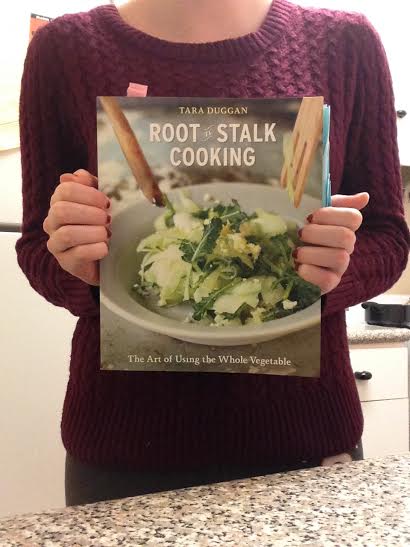Cooking is enjoyable but preparing anything more elaborate than pasta and chicken comes with a messy kitchen that often takes just as long to clean as actually making the meal. Sticking to the basics is much easier.
This semester I have been forced by my food journalism professor to liven up my dinners with the help of Tara Duggan’s “Root to Stalk Cooking.” I like it so much that cleaning up after cooking is almost okay — almost. I intend to keep using it after this semester and have even plastered blue sticky notes on all of the recipes I want to try.
This cookbook is a collection of recipes that use parts of vegetables typically thrown away or tossed in the compost heap. It is divided into six sections based on the type of produce the recipe requires: roots, bulbs and stems, leaves, flowers, seeds and fruit. Duggan decided to make a cookbook tackling food sustainability when she wrote an article for the San Francisco Chronicle about reducing food waste. She has written a few more since then.
“Sometimes it’s so much easier to put things in the compost,” Duggan said during a phone interview. “The challenging part was coming up with things that people would really be willing to do.”
Duggan’s cauliflower with smoked paprika and whole wheat spaghetti calls for an entire head of cauliflower — leaves and all. I was skeptical at first but ended up enjoying the subtle crunch of the leaves contrasted with the tender pasta and cauliflower.
The book also contains more common food combinations, like garlic-braised chard. I made it as a side to salmon and scrambled the leftovers with eggs the next morning. This was a great recipe to cook on a busy day because it took less than 15 minutes. This past weekend I made a smoky corn chowder, which made my dorm room smell amazing.
Although this book is great overall, there are a few things that could be changed. It would be helpful if the top of each recipe had a start-to-finish time. Some of the recipes take longer than others (the corn chowder took a while) and it is easier to plan out a cooking schedule when proper times can be allotted. It would also be helpful to have a note next to each recipe that indicates what season the fruit or vegetable the recipe calls for grows in.
Winter break is approaching and that means more free time for cooking. Maybe I will force myself to branch out and make every recipe in the book by this time next year — even the ones I would like to avoid.

